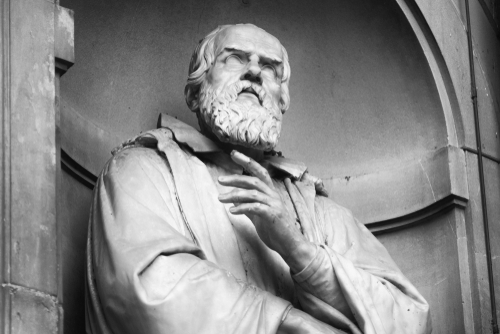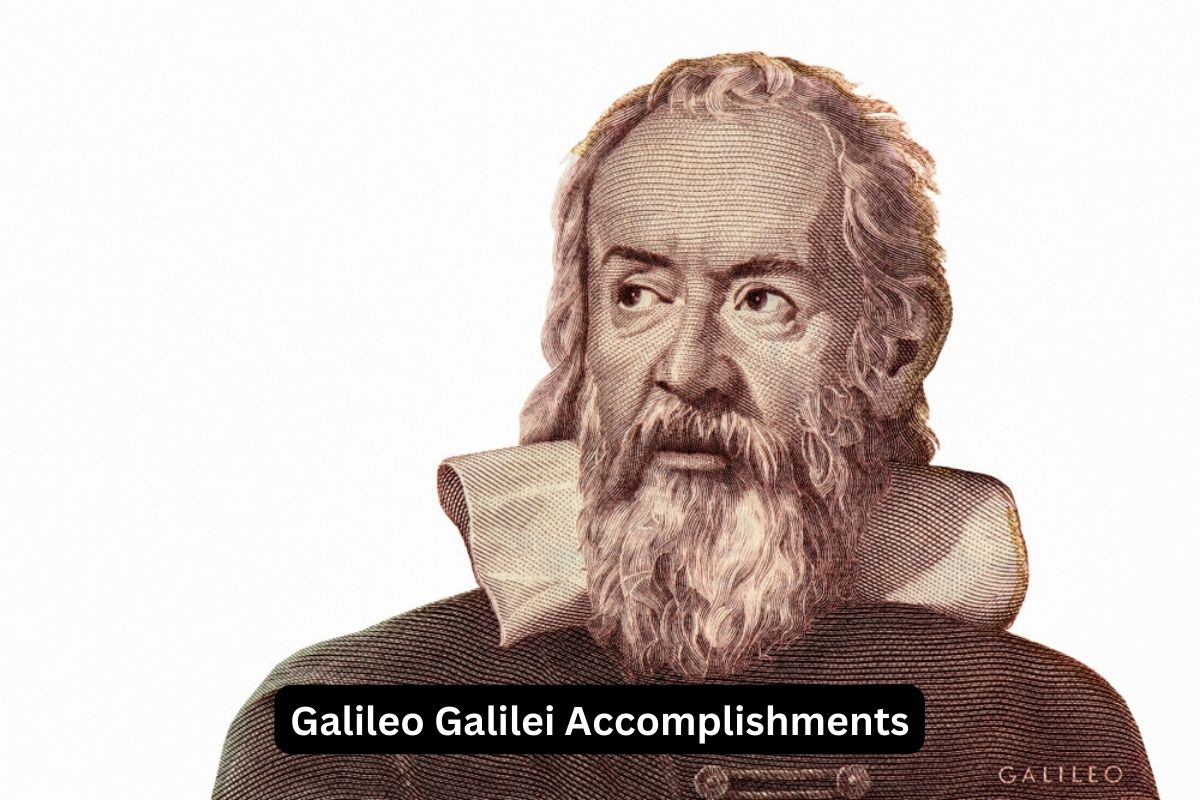Galileo Galilei was an Italian astronomer, physicist, and mathematician who lived during the 16th and 17th centuries. He made numerous significant contributions to various fields of study, including astronomy, physics, and the scientific method.
Galileo’s work laid the foundation for modern scientific inquiry and had a profound impact on our understanding of the natural world. His improvements to the telescope allowed him to make groundbreaking astronomical observations, such as the discovery of Jupiter’s moons and the observation of the phases of Venus.
Galileo’s investigations into motion, including the laws of falling bodies and the study of pendulums, revolutionized our understanding of mechanics.
Despite facing opposition and persecution from the Church, Galileo’s commitment to scientific truth and empirical evidence left a lasting legacy on the progress of science.
Accomplishments of Galileo Galilei
1. Laws of Motion
Galileo Galilei made significant contributions to our understanding of motion. He formulated the laws of motion, which describe the behavior of objects in motion.
Also Read: Facts About Galileo Galilei
One of his key insights was that objects in motion tend to stay in motion unless acted upon by an external force. This principle, known as the law of inertia, laid the foundation for Isaac Newton’s later work on the laws of motion.

2. Pendulum
Galileo studied the motion of pendulums and made important discoveries about their behavior. He found that regardless of the amplitude of the swing, the time it takes for a pendulum to complete one back-and-forth motion (its period) remains constant.
Also Read: Johannes Kepler Facts
This insight was crucial for the development of accurate timekeeping devices such as pendulum clocks, which played a significant role in navigation and scientific research.
3. Telescope
Galileo is famously associated with his improvements to the telescope. He built his own telescopes, which had better magnification and resolution compared to previous designs. Using these telescopes, Galileo made groundbreaking astronomical observations that revolutionized our understanding of the universe.
He observed the Moon’s craters and mountains, which challenged the prevailing notion of the Moon’s perfect, smooth surface. Galileo also discovered four of Jupiter’s largest moons, now known as the Galilean moons (Io, Europa, Ganymede, and Callisto), which provided evidence for the idea that celestial bodies can orbit something other than Earth.
Additionally, Galileo observed the phases of Venus, which supported the heliocentric model of the solar system proposed by Copernicus, where the Sun is at the center and planets revolve around it.
His telescopic observations provided empirical evidence that supported the heliocentric model and challenged the geocentric model that placed Earth at the center of the universe.
4. Laws of Falling Bodies
Galileo Galilei conducted experiments and made important discoveries related to the motion of falling bodies. Contrary to the prevailing Aristotelian belief that heavier objects fall faster, Galileo demonstrated that in the absence of air resistance, objects of different masses fall at the same rate.
He conducted experiments by rolling balls down inclined planes and timing their motion. Through these experiments, Galileo formulated the principle that all objects, regardless of their mass, experience the same acceleration due to gravity when falling near the surface of the Earth. This principle is often summarized as “in a vacuum, all objects fall at the same rate.”
5. Scientific Method
Galileo Galilei played a crucial role in advocating for and advancing the scientific method. He emphasized the importance of systematic observation, experimentation, and mathematical analysis in understanding the natural world.
Galileo’s approach was to gather empirical evidence through careful observations and experiments, analyze the data using mathematics, and draw logical conclusions based on the evidence.
His emphasis on empirical evidence and rigorous experimentation laid the foundation for modern scientific inquiry and greatly influenced the development of scientific methods used to this day.
6. Hydrostatic Balance
Galileo Galilei invented the hydrostatic balance, a device used for precise measurement of small weights. The hydrostatic balance employed the principles of fluid mechanics to accurately measure the weight of an object immersed in a fluid, taking into account the buoyant force acting on it.
This invention had practical applications in various fields, including engineering, physics, and medicine.
The hydrostatic balance allowed for precise measurement of small weights, which was particularly valuable in scientific research, industrial applications, and quality control.
Galileo’s invention of the hydrostatic balance showcased his ingenuity and contributions to the field of measurement and instrumentation.
7. Kinematics
Galileo Galilei made significant contributions to the field of kinematics, which is the study of the mathematical description of motion without considering its underlying causes. He developed a mathematical framework for analyzing the motion of objects, particularly in free fall and projectile motion.
Galileo’s experiments and mathematical analysis led to the understanding that the path of a projectile follows a curved trajectory, forming a parabola. His work on kinematics laid the groundwork for later advancements in the study of motion and mechanics.
8. Tides
Galileo conducted extensive studies on the phenomenon of tides, which are the rising and falling of sea levels caused by gravitational forces exerted by the Moon and the Sun.
While Galileo’s explanation for tides was not entirely accurate, he made important observations and proposed that the motion of the Earth and the moon played a role in causing the tides.
Galileo’s studies contributed to a better understanding of tidal phenomena, paving the way for future scientific investigations into the complex dynamics of tides.
9. Observational Astronomy
Galileo Galilei’s use of the telescope revolutionized observational astronomy. He made numerous groundbreaking observations of celestial bodies that challenged existing beliefs about the nature of the universe. Galileo observed sunspots, which are dark patches on the surface of the Sun, providing evidence that the Sun is not a perfect, unchanging celestial body.
He also observed the phases of Venus, which showed that Venus orbits the Sun and not Earth. These observations supported the heliocentric model of the solar system proposed by Nicolaus Copernicus. Galileo’s most significant discovery was the observation of Jupiter’s moons.
He discovered four large moons orbiting Jupiter, now known as the Galilean moons (Io, Europa, Ganymede, and Callisto). This discovery shattered the notion that all celestial bodies revolve around Earth and provided further evidence for the Copernican model.
Galileo’s observations and discoveries fundamentally changed our understanding of the structure of the solar system and the nature of celestial bodies.
10. Conflict with the Church
Galileo Galilei’s conflict with the Roman Catholic Church is a notable aspect of his life and career. His defense of the heliocentric model and his insistence on empirical evidence clashed with the prevailing religious and philosophical beliefs of the time.
Galileo faced opposition from the Church and was accused of heresy for promoting the heliocentric model, which contradicted the Church’s geocentric view of the universe. He was summoned to appear before the Inquisition and was eventually found guilty of heresy in 1633. Galileo was sentenced to house arrest for the remainder of his life.
Despite the hardships he faced, Galileo’s commitment to scientific inquiry and his willingness to challenge established beliefs paved the way for the separation of science and religion and the advancement of scientific thought in the centuries that followed.
